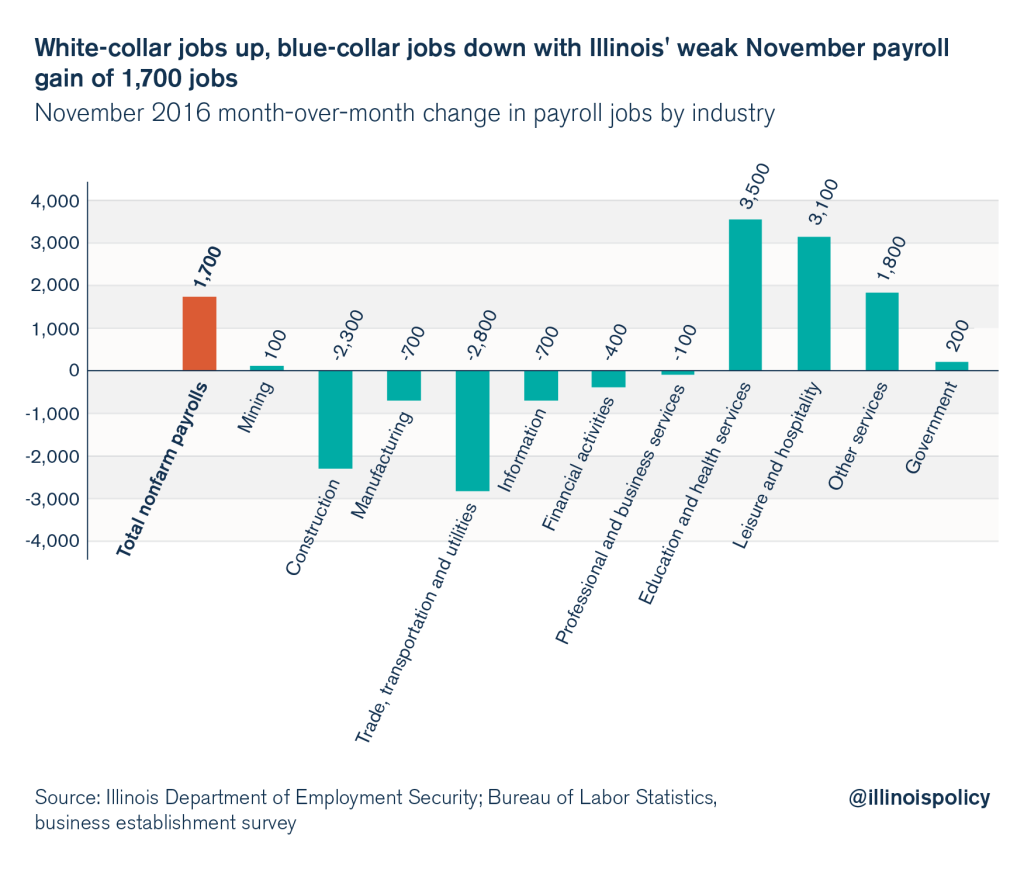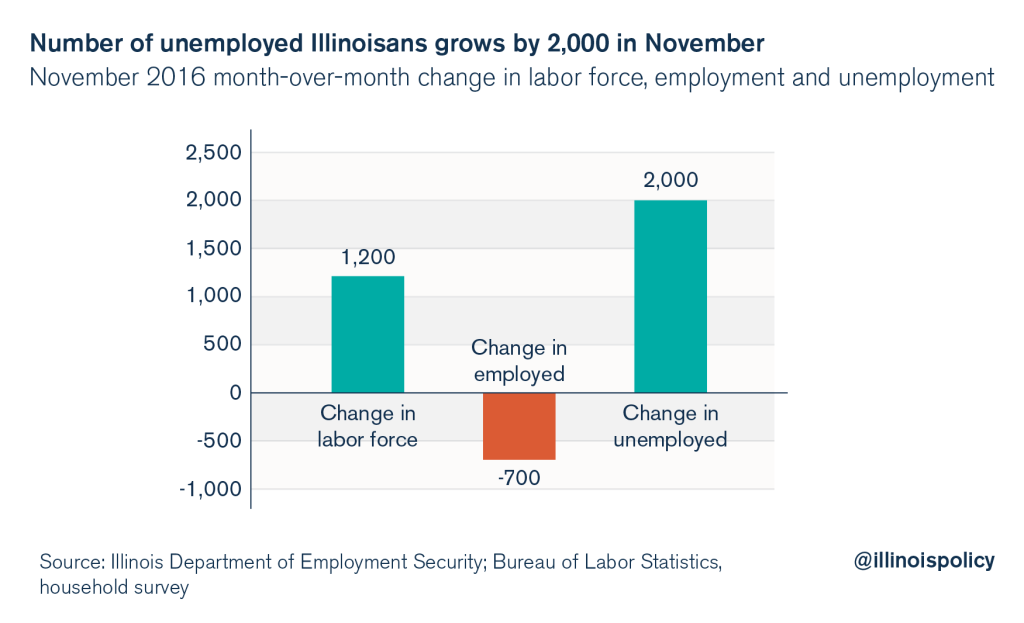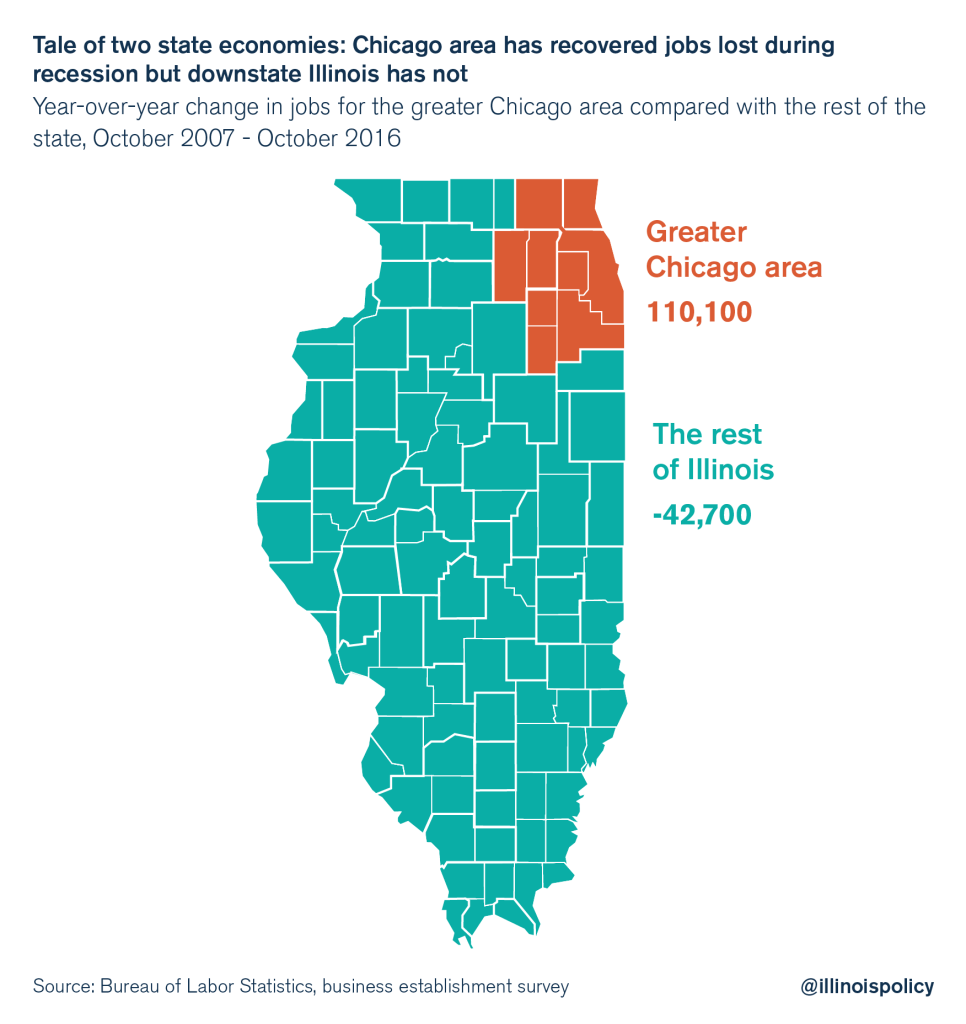Illinois November jobs report: 1,700 jobs gained overall, white-collar jobs up, blue-collar jobs down
The Illinois Department of Employment Security’s newly released jobs report shows Illinois’ 1,700 jobs gained in November were concentrated in white-collar service sectors, and that blue-collar fields, such as manufacturing, lost jobs.
Illinois had a net gain of 1,700 payroll jobs in November, according to an economic release Dec. 15 from the Illinois Department of Employment Security, or IDES. The modest overall job gains were due to an increase in white-collar occupations, but Illinois’ struggling blue-collar sectors were hit with more losses.
Education and health (+3,500); leisure and hospitality (+3,100) and other services (+1,800) led on gains while blue-collar sectors trade, transportation and utilities (-2,800); construction (-2,300) and manufacturing (-700) had the largest losses. November’s one-month snapshot reflects the state’s ongoing divergence between white-collar and blue-collar job opportunities.

The household portion of the Bureau of Labor Statistics survey on which the IDES report is based showed that the unemployment rate stayed flat at 5.6 percent for the month. The number of unemployed Illinoisans increased by 2,000 people in November. The state’s number of employed people fell by 700 on the month, and the overall workforce grew 1,200 for the month. The 2,000 person increase in unemployment, though unfortunate, was not significant enough to cause an increase in the unemployment rate.
White-collar jobs up in metro areas, blue-collar opportunities decline in downstate and minority communities
The divergence between white-collar opportunities and blue-collar opportunities mirrors the divide between Illinois’ largest metro area and its less populous, more rural regions. The gains in white-collar jobs have been concentrated in the Chicago area, while manufacturing and blue-collar job losses have devastated many downstate communities. Over the past year the Chicago area has gained jobs while the rest of the state has lost jobs. And compared with job numbers before the recession, the greater Chicago area is up 110,000 jobs while the combined downstate communities are down 43,000 jobs.
Many downstate communities centered around manufacturing or other production work suffer under a tax and regulatory environment that is especially costly for industrial occupations. And the same taxes and regulations that cause problems for downstate industrial communities also affect minority communities in the Chicago area, who have seen well-paying production jobs flee the area in recent years.
For these reasons, Illinois has the nation’s highest black unemployment rate, as minority communities in the Chicago area have had to grapple not only with the job-destroying effects of taxes and industrial regulations, but also with burdensome occupational licensing requirements and an underperforming education system, which make it hard to get a start in many fields and to compete for existing jobs.
In light of the state’s sputtering production sector and the harm this has inflicted on many Illinoisans from downstate areas and minority communities, lawmakers should focus on avoiding job-killing tax hikes by reforming the state’s heavily indebted, costly pension systems and making the state an attractive place for businesses to invest. Although the greater Chicago area has seen service sector industries continue to hire, that is not enough to pull along the state and put unemployed minorities and manufacturing workers back on the job.
Illinois needs tax and regulatory reform to unleash economic growth and allow all communities in the state to thrive.
